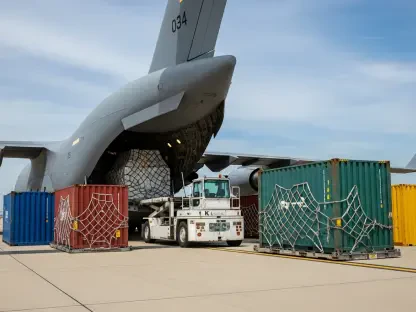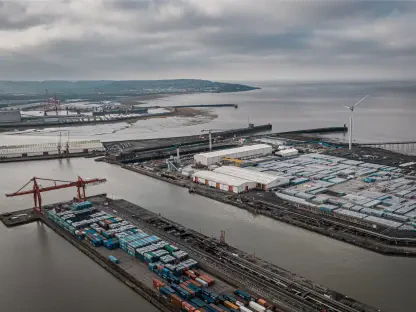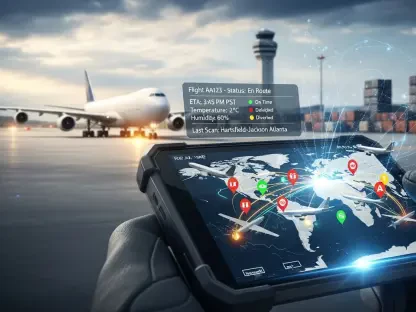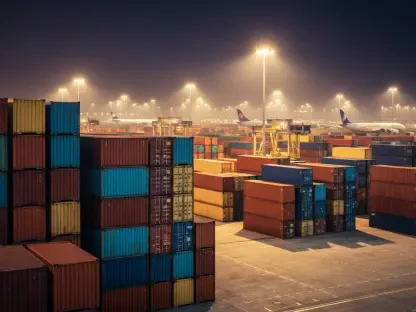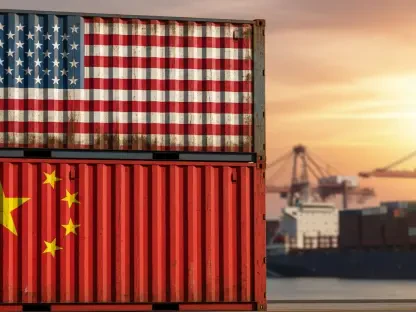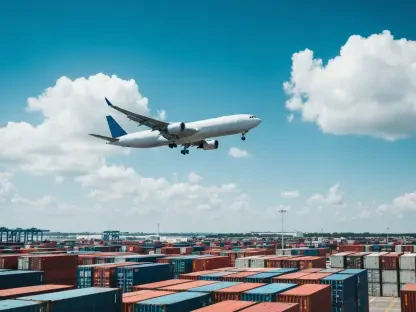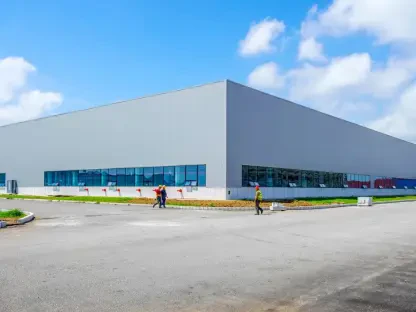The shipping and logistics sector is undergoing significant change, much of which can be attributed to advancements in technology, specifically the Internet of Things (IoT) and data analytics. These tools are not just improving operational efficiencies—they’re revolutionizing industry norms.IoT allows for unprecedented connectivity across the supply chain. Sensors can track shipments in real-time, offering exact locations and conditions, such as temperature or handling quality. This data-led transparency means companies can respond instantly to in-transit issues, enhancing accountability and client trust.Meanwhile, analytics plays a pivotal role in making sense of the vast data generated by IoT. By examining patterns and performance metrics, companies can identify bottlenecks and predict future challenges, leading to more informed decision-making. This can result in optimized routing, better inventory management, and ultimately, cost savings.The convergence of IoT and analytics is creating a smarter, more responsive logistics landscape. As real-time tracking becomes the standard and data-driven insights dictate warehouse operations, companies in this sector are experiencing a substantial shift that promises greater efficiency and improved customer satisfaction. This transformation is not just a showcase of technological prowess; it’s setting new benchmarks for how shipping and logistics operate globally.
The Rise of IoT in Shipping and Tracking
Leveraging IoT for Real-Time Monitoring
The implementation of IoT devices equipped with various sensors marks a significant milestone in shipment tracking and management. These sensors are capable of providing vast amounts of data in real time through GPS and eSIM technologies, enabling companies to track goods with unprecedented precision. This data is used not just for tracking shipments but also for optimizing routes based on traffic patterns, weather conditions, and other variables, ensuring timely delivery and inventory management.Moreover, IoT makes it possible to monitor the conditions inside shipping containers or trucks. Temperature-sensitive medicines, perishable food items, and fragile goods can now be transported under constantly monitored conditions, minimizing spoilage and damage. This advancement increases customer satisfaction by increasing the likelihood that products arrive in perfect condition.
Impact on Transportation Safety and Security
With increasing reliance on technology, the transportation of sensitive goods has become more secure than ever. IoT devices provide a continuous stream of information regarding the environmental conditions surrounding the shipments, thereby enabling the prevention of spoilage and damage to fragile goods. Additionally, IoT’s capability to track the exact location and status of the cargo in real time makes it much harder for theft and unauthorized tampering to go unnoticed.IoT platforms also offer geofencing features, which alert logistics companies if a shipment deviates from its planned route, allowing for immediate corrective action. This greatly improves the overall safety and security measures throughout the transportation process, paving the way for a more reliable logistics industry.
Optimizing Warehouse Operations with IoT and Analytics
Streamlining Warehouse Efficiency
IoT technology plays a critical role in modern warehouse management. By integrating IoT sensors with warehouse management systems (WMS), companies can ensure that internal environments are constantly monitored and adjusted, leading to optimal storage conditions for diverse inventory. IoT data is also valuable in managing inventory levels, with sensors immediately reporting stock depletion and triggering automated reordering processes, thus maintaining a seamless supply chain and preventing stockouts.The power of predictive analytics in IoT systems also allows for the anticipation of peak periods, adjusting labor and resource allocation accordingly. Deploying robots for picking and packing, guided by IoT sensor data, further streamlines operations, increasing efficiency and reducing the risk of human error.
Data-Driven Warehouse Management
Within the dynamic world of warehouse operations, Amazon stands as a prime example of how IoT integration can revolutionize the industry. Through the application of cutting-edge analytics and IoT systems, they effectively handle immense data to fine-tune processes like stock arrangement and the sequence of item selection. These technological advances substantially enhance operational speed and proficiency while simultaneously driving down the costs related to workforce and power use.Data on the frequency and paths of item handling are meticulously gathered by these IoT systems and fed into the Warehouse Management Systems (WMS). This enables a continuous refinement of the warehouse’s algorithms, leading to a warehouse that learns and adapts in real-time. The efficiency of processes is incessantly boosted, and the time it takes to fulfill orders is noticeably shortened. The ripple effect of these improvements is a superior customer experience. The ingenuity of Amazon’s approach offers a glimpse into the potential evolution of warehouse operations, where IoT not only streamlines processes but also opens pathways for innovation and enhanced performance.
The Advent of Digital Freight Forwarding Platforms
Integration of AI and IoT in Freight Forwarding
Digital freight forwarding platforms have transformed the shipping industry with the adoption of advanced AI and IoT technologies. These innovative platforms simplify the process of booking shipments, offer dynamic tracking of cargo, and enhance the efficiency of logistics management.AI’s role in these platforms is multifaceted – it processes large data sets to forecast shipment needs, enabling smarter route optimization and inventory control. This predictive capability is crucial in improving the allocation of transport resources and reducing unnecessary costs.IoT, on the other hand, enables the real-time visibility of freight, which is integral to modern logistics. It contributes to the accuracy of tracking information, allowing for more precise coordination and timely decision-making.Moreover, AI significantly personalizes customer service by evaluating past data to predict user needs and propose tailored shipping solutions. This approach aligns well with the evolving expectations of customers who seek personalized shipping experiences.As customer demands change, these platforms are adept at swiftly adjusting strategies, thanks to the detailed insights generated by IoT devices and analytics tools. By enhancing route planning, improving inventory management, and delivering custom-tailored service, digital freight forwarding platforms demonstrate agility and innovation in the rapidly evolving logistics landscape.
The Shift to Customer-Centric Services
The logistics industry is currently undergoing a significant transformation, fueled by the integration of IoT (Internet of Things) and analytical capabilities. These innovations are propelling freight forwarding services to be more centered on the needs and expectations of their customers. With such technological advancements, shippers now enjoy benefits like transparent pricing models, comprehensive tracking of shipments, and enhanced control over their logistics operations. This shift aligns with the growing necessity for empowerment and clarity for customers within the supply chain.IoT and AI are at the forefront of smoothing out the logistical landscape, producing a sector that is not just reactive, but also predictive in terms of understanding and meeting customer needs. This customer-centric approach significantly deviates from how logistics used to be managed, heralding a new age of service in the industry.The integration of such cutting-edge technology means that customer service in logistics is not only about responding to present demands but also about foreseeing and planning for future ones. This paradigm shift reflects a broader move towards transparency and customer control in the digital age, establishing a modern standard for shipping and supply chain management. As these technologies continue to evolve, the logistics industry is set to become even more aligned with the preferences and conveniences of the end users, underscoring a groundbreaking period for global trade and commerce.
Deployment of Drones in Logistics
Exploring the Prospects of Drone Deliveries
Drones are not just a novel concept in logistics; they represent a growing movement that’s set to expand significantly. Already, drones equipped with cutting-edge IoT technology are revolutionizing the way inventory is managed within warehouses. Their ability to navigate towering shelves expedites stocktaking tasks, outpacing traditional human-led methods.The drone delivery market is expected to experience a significant boom, with projections suggesting it will grow to a staggering $11.66 billion by 2028. The integration of drones into delivery systems has the potential to drastically alter the distribution landscape by offering quicker and greener options for parcel delivery. This is particularly relevant for urban areas, where drones present a promising solution to the complex “last-mile delivery” challenge.Moreover, the benefits of drone deliveries extend beyond speed and efficiency; they provide a valuable service channel to geographical regions that conventional delivery vehicles cannot reach. There’s a growing excitement surrounding the environmental benefits as well, with drones heralded as a more sustainable alternative to fuel-dependent delivery modes.As the drone delivery sector continues to mature, it’s clear that these high-flying vehicles will transform the logistics industry, making package delivery faster, cleaner, and more accessible than ever before.
Addressing Logistics Challenges with Drones
Drones are uniquely equipped to overcome complex logistics challenges previously deemed insurmountable. With their ability to quickly move in three-dimensional space, drones have the potential to deliver goods directly to consumers’ doorsteps or even to balcony windows. Not only does this address the challenge of last-mile deliveries in congested urban areas, but it can also serve remote or rural locations where infrastructure is minimal.Integrated with the larger IoT infrastructure, drones can communicate in real-time with other logistics assets, allowing for intelligent path-planning and dynamic rerouting to avoid obstacles and delays. This synergy between drone technology and IoT is creating opportunities for enhanced delivery services that prioritize efficiency and consumer convenience.
The Future Outlook of IoT and Analytics in Logistics
Anticipated Market Growth and Adoption Trends
The logistics industry is on the cusp of a technological revolution with the help of IoT and analytics. Market analysts forecast that by 2030, the global market value of IoT in transportation could reach an incredible $495 billion. The adoption trends are clear: these technologies are not optional extras but essential tools for remaining competitive in a rapidly evolving global market.The impetus for this growth is partly driven by increased demand for transparency and efficiency within supply chains. As more businesses and consumers expect real-time data and analytics to inform their decisions, logistics providers are adopting IoT and analytics solutions to meet these expectations. These technologies also pave the way for more sustainable and environmentally friendly logistics practices, adding yet another dimension of value.
Envisioning a Data-Driven Logistics Ecosystem
The future of shipping logistics will be undeniably influenced by the continuous integration of real-time data and analytics into every aspect of the industry. We can expect a logistics ecosystem where information flows seamlessly, enhancing operational decisions and customer experiences alike. The potential for new technologies, such as blockchain for even greater supply chain transparency and machine learning for advanced predictive analytics, holds great promise for even further enhancements in efficiency, accuracy, and customer satisfaction.The integration of IoT and analytics in shipping logistics heralds a new era of efficiency and precision. From real-time shipment monitoring to smart warehouses and automated freight forwarding, these technologies are not only transforming the industry but are setting a new standard for the future of global trade.



